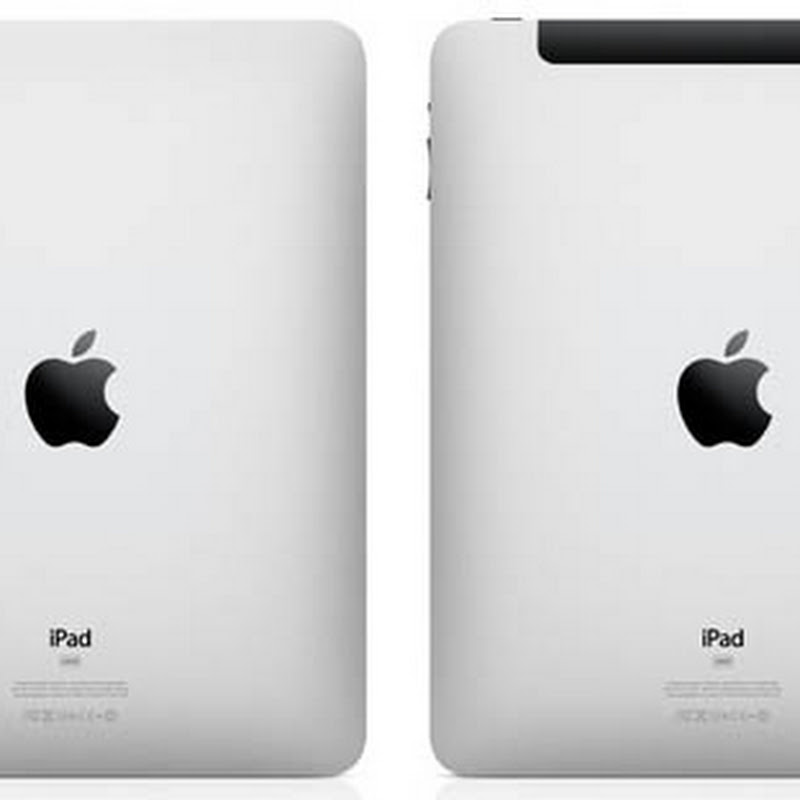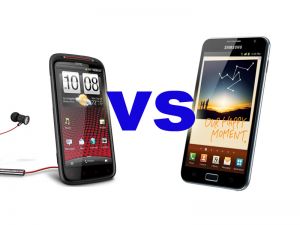Samsung's Galaxy S2 takes on HTC's new Windows Phone 7-powered handset, the aptly named TitanWe pit HTC’s new Titan into battle against the ruling champion, Samsung’s Galaxy S2, to see if it can live up to its imposing name.
Form: HTC Titan - 131.5x70.7x9.9mm, 160g
Samsung Galaxy S2 - 125.3x66.1x8.5mm, 116g
HTC’s latest handset doesn’t deviate much from the standard visuals we’ve come to expect from the company.
That isn’t to say there’s anything wrong with HTC’s often repeated design ethos. It certainly isn’t jarring or offensive to the eye. But equally if you wanted something a little more out-of-the-ordinary you might be in for a disappointing time with the HTC Titan.
It’s pretty much the same ‘candy-bar’ shape as every other HTC phone, a neat rectangle with rounded corners, a shiny black border round the touchscreen and a relatively smooth and minimalist back panel.
If you like HTC’s designs you’ll probably be quite happy here. It’s certainly a thin handset at 9.9mm but the rest of its proportions are on the larger side making for an imposing piece of kit – and it really needs to be to house that 4.7-inch touchscreen.
A side-effect of this is that it’s quite substantial in the hand at 160g and it’s considerably heavier than its opponent.
Compared to the Galaxy S2, however, it offers a much more solid build quality, where the Samsung has opted for lightweight, and slightly flimsy, plastic to keep the weight down to a feather-light 116g, the Titan uses an aluminium unibody construction, so it’s pretty durable.
The S2 also uses the now universally recognisable shape laid-down by the iPhone as its form template. It’s also a fair bit more striking than the Titan thanks to its slightly less pronounced corners and thinner profile at a mere 8.5mm.
It takes an even more minimalist approach than the HTC, if you can believe it, though it does sport a rather racy mesh-like back panel to jazz things up a bit.
We prefer the Titan’s build quality but you pay for it with extra weight and ultimately the Samsung is the better looking of the two by far.
Winner – Samsung Galaxy S2
Display: Each of these handsets has been fitted with above-average touchscreen technology. On the one hand the Galaxy S2 uses Samsung’s own Super Amoled Plus wizardry for enhanced colours, brightness and power efficiency.
The HTC has opted for Sony’s very similar equivalent S-LCD screen, which pretty much offers the same benefits.
The Galaxy S2’s capacitive touchscreen uses toughened Gorilla Glass, something HTC’s Titan lacks. Apart from this the display features are quite similar with both phones sporting multi-touch control input alongside gyroscope and accelerometer sensors for screen orientation.
Samsung’s handset uses the company’s own TouchWiz UI user interface (UI) overlaid on the Android operating system.
Both phone displays have the same resolution at 800x480 pixels but where the Titan has a sizeable 4.7-inch display the S2 has a smaller 4.3-inches.
This means the corresponding pixel densities are a decent 199 pixels-per-inch (ppi) for the HTC and a more impressive 217ppi for the Samsung.
Of course that gap isn’t huge, the Titan still offers a very high quality picture but the Samsung S2’s visuals should be that little bit sharper – a factor which wins it this round.
Winner – Samsung Galaxy S2
Storage: The HTC Titan is handsomely kitted out with 16GB of onboard storage and a decent enough 512MB of RAM.
However, Samsung easily sweeps this aside with options for either 16GB or 32GB of internal capacity and twice the RAM of the Titan.
The Samsung also has the upper-hand when it comes to external storage with support for micro SD up to 32GB and shipping with an 8GB card as standard. Against this the HTC Titan is looking a little sheepish with no card slot to be found.
In reality the storage on the Titan is actually a pretty good offering from HTC but the simple fact of the matter is that it’s one of the phones weaker areas, perhaps a testament to how good the phone actually is considering 16GB isn't bad by any means.
By comparison, however, the Galaxy S2 is equipped in such a way that you’ll never be wanting for extra room.
The presence of substantial card support in the Samsung where the Titan is totally lacking and a higher maximum in-built capacity option makes the Galaxy S2 a sure winner here.
Winner – Samsung Galaxy S2
Processor: Samsung has given the S2 a meaty 1.2GHz dual core processor, it’s an ARM Cortex-A9 power plant running on the Exynos chipset, which also packs a Mali-400MP graphics processing unit (GPU) into the bargain.
Against this the Titan brings a single core processor clocked at an impressive 1.5GHz. This one uses Qualcomm Scorpion technology with the MSM8255 Snapdragon chipset and an Adreno 205 GPU.
Despite the difference between clock speed and number of cores these handsets offer, we'd expect a similar level of performance – and neither will disappoint.
We’re straying into operating system territory here but it does seem to be the case that Android benefits from a more brute force approach via dual core.
Meanwhile, Windows Phone 7 is specifically optimised for a 1GHz minimum on single core, so with the 1.5GHz at its disposal it’s capable of delivering some pretty slick stuff to say the least.
We would say though that the Samsung probably has the edge when it comes to mobile gaming thanks to multiple cores and a more impressive GPU.
Both are more than capable of intense multi-tasking, smooth gameplay and responsive app usage, though.
We think most users would be hard pressed to make these phones break a sweat and are certainly not going to be disappointed with either.
Winner - Draw
Operating System: HTC’s Titan runs the latest version of Microsoft’s mobile operating system, Windows Phone 7 Mango.
Against this Samsung’s Galaxy S2 uses the most recent smartphone build of Google’s Android platform, version 2.3 Gingerbread.
First let’s take a look at what Windows Phone 7 Mango offers.
Mango brings more than 500 tweaks and changes to Microsoft’s relatively new Windows Phone 7 operating system. Many of these are aimed at plugging functionality gaps users experienced in previous builds.
However, the vast majority are simply expanding the system with new features to offer a richer experience – and it's one that we cannot wait to try.
Previously the system’s Live Tiles were very well received as an innovative and user-friendly method of combining information with effortless navigation.
The Live Tiles haven’t gone anywhere but they have been given a tune-up which allows them to display much more information on the surface.
Not only do the native apps take advantage of being able to display more detailed messages thorough the Live Tiles, but Microsoft has launched developer APIs which should allow third-party app makers to get in on the fun.
In practice this means that, where before a diary app’s Live Tiles might display your next appointment, the new Live Tiles in Mango could show a scrolling ticker of all your events for the rest of the day with full clock and calendar information.
The main thing you’ll notice with Mango is how well integrated everything is, you’re never more than a tap or swipe away from exactly what you want to do.
Social networking, in particular has been given plenty of attention, there’s the native apps for Facebook, Twitter and LinkedIn but you’ve also got options for each available from many other parts of the system.
Better still is the ‘People’ hub. For starters it combines all methods of communication into continuous threads, so that’s Facebook,Twitter, instant messaging, email and text (amongst others).
It also tells you when your contacts are online across mediums, so there’s no need to text if you can get them on Google Talk, for example.
Another major convenience of the People hub lies in the name. It lets you create groups of your favourite contacts so when you view said group you get a combined list of all Tweets, messages, texts, Facebook updates and so on.
You can also send a message out to all members of a group across multiple mediums at once.
It’s a thoughtful design aimed at keeping you on the pulse of your social circle.
You’ve now got complete control of your inboxes this time round, email accounts can be combined or separated into their own inboxes and these can be pinned to the start menu for quick access.
Mango will also check incoming mail for event invitations and check any against your calendar info. If you’re at risk of double booking it’ll stick a warning directly into the email text so you don’t miss it.
Gingerbread isn’t quite such an optimised or integrated system. Performance is better than previous builds and the interface has been tweaked to be slicker and more intuitive than before.
Of particular note is the touch keyboard, where previously this was a bit of a mess, you’ve now got a much more usable piece of kit meaning texting and browsing is less of a chore.
On that last point of browsing though things are not exactly peachy, despite sitting on all the goodness that is Chrome, Google has still failed to add tabbed browsing and navigation controls are still not that great.
Multi-tasking is still Android’s golden egg, it handles things effortlessly and will easily run multiple apps simultaneously.
Things are improved further though thanks to a new toolset giving you more control over your active apps.
If you’d rather not play admin though, Gingerbread will do an ample job of keeping things in line by itself.
We like the Android system but Gingerbread probably isn’t the best example and Windows Phone 7 Mango is bringing something very special indeed.
We have to say we’re more impressed with Microsoft this time round.
Winner – HTC Titan
Camera: These handsets are each fitted with an 8-megapixel primary at 3264x2448 pixels resolution.
They also both have secondary cameras but where the Titan’s is 1.3-megapixels the S2’s is slightly better at 2-megapixels.
Both devices share autofocus, touch focus and geo-tagging, the Titan also has a digital zoom while the S2 instead offers image stabilisation, panoramic capture and face and smile detection features.
Samsung’s Galaxy S2 has an LED flash but the Titan is a bit better off with a dual-LED setup.
The Titan can capture video in 720p HD, but Samsung’s handset goes one better with both 720p HD and 1080p HD.
Both phones support video calling and the Galaxy S2 has a video light.
That extra flash and digital zoom is certainly nice to have in the Titan but all in all we feel the Samsung has a better setup here thanks to better quality video capture and a more extensive and more useful list of additional features.
Winner – Samsung Galaxy S2
Final Thoughts: In most areas the Samsung still reigns supreme thanks to a staggering hardware line-up.
However, the HTC Titan puts up a very good fight and is still a phone worthy of your attention.
The main point of contention comes in the operating system, where Windows Phone 7 comes out looking better.
This alone can’t win the contest for the Titan and we’re inclined to say the Samsung is the better choice overall, but if you find Windows Phone 7 tempting you probably won’t regret going with the Titan.
At the same time because the Samsung will get an Ice Cream Sandwich update when it hits this will make an already brilliant phone even better.
Basically: it's a tough call either way. Personally, we're waiting for Samsung to unleash a Windows Phone 7 Mango-powered Galaxy S2 device – expect that bad boy sometime before the end of the year.






 11:52 PM
11:52 PM
 Simranpal SIngh
Simranpal SIngh































